
How to Use SCD-40: Examples, Pinouts, and Specs
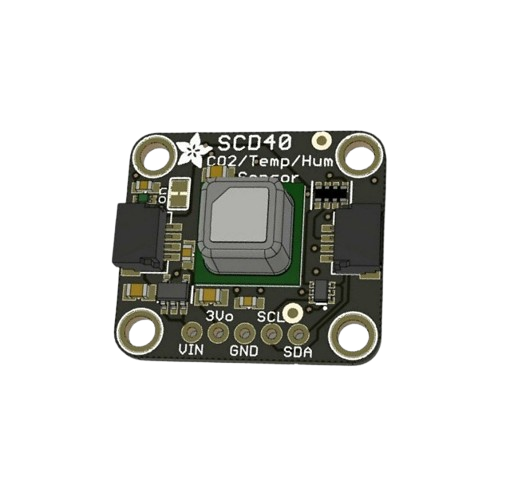
 Design with SCD-40 in Cirkit Designer
Design with SCD-40 in Cirkit DesignerIntroduction
The SCD-40 is a high-precision digital CO2 sensor manufactured by Adafruit. It is designed to measure carbon dioxide (CO2) concentration in the air using advanced non-dispersive infrared (NDIR) sensing technology. This sensor is compact, energy-efficient, and provides accurate and reliable readings, making it ideal for applications such as indoor air quality monitoring, HVAC systems, greenhouses, and environmental control systems.
Explore Projects Built with SCD-40
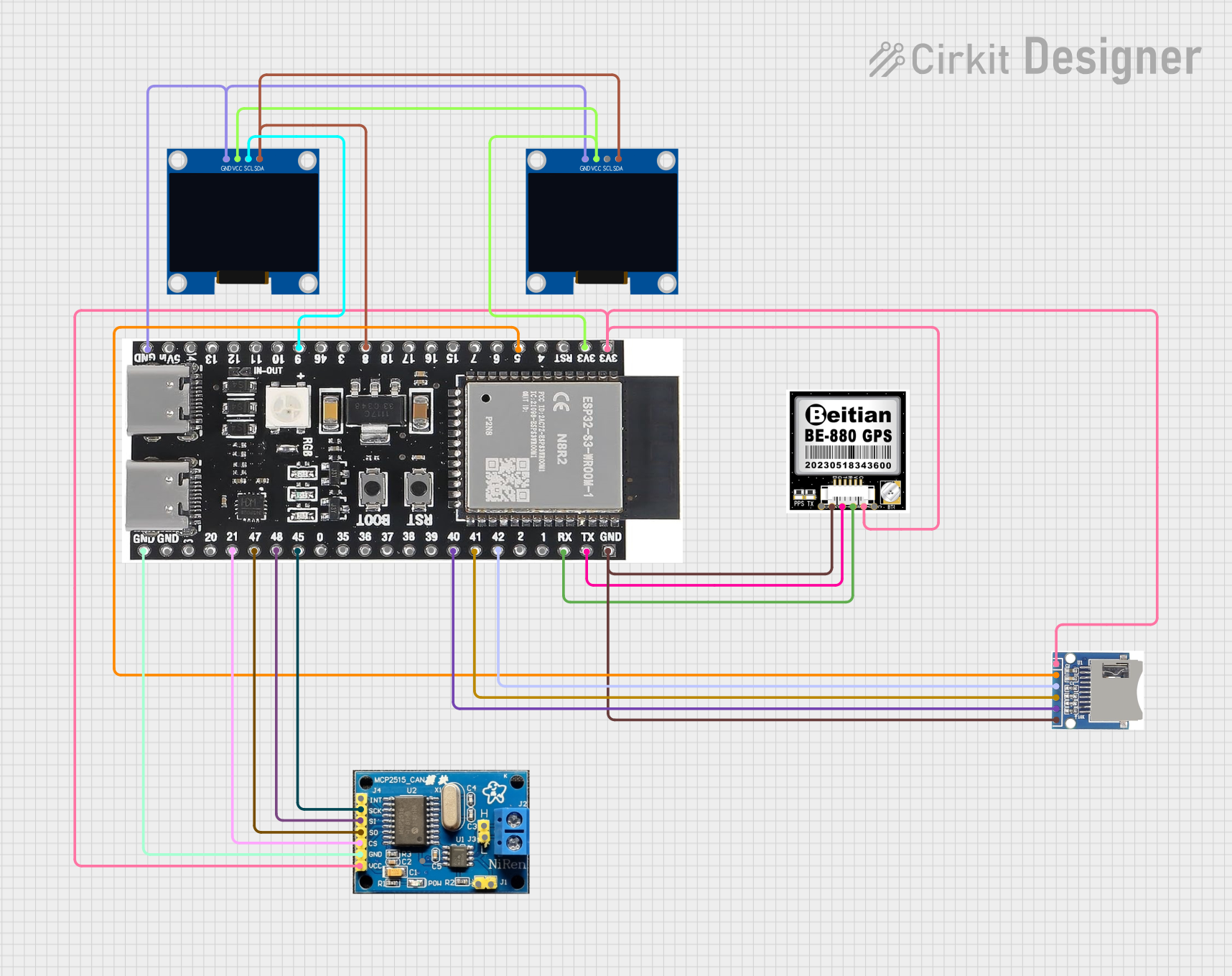
 Open Project in Cirkit Designer
Open Project in Cirkit Designer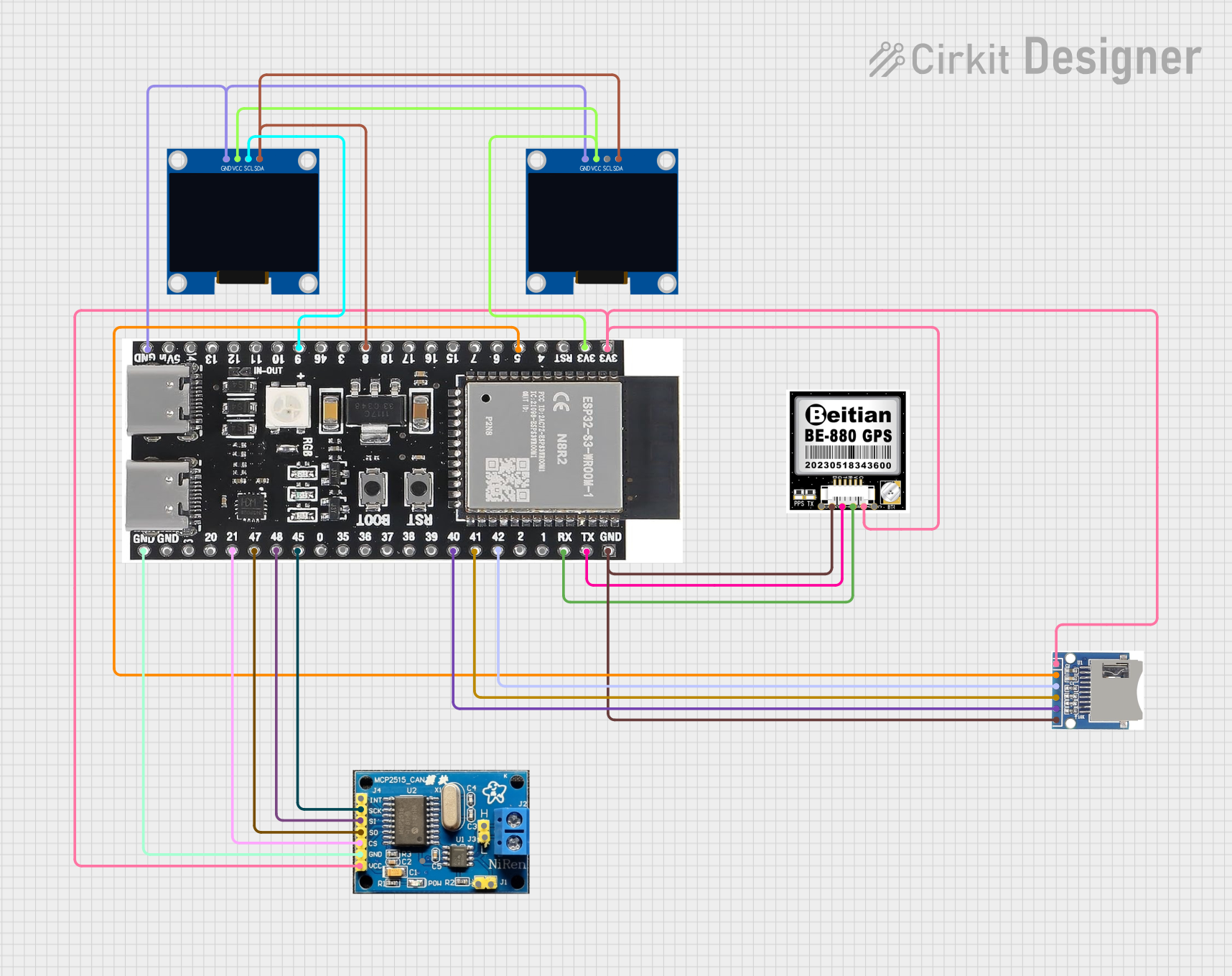
 Open Project in Cirkit Designer
Open Project in Cirkit Designer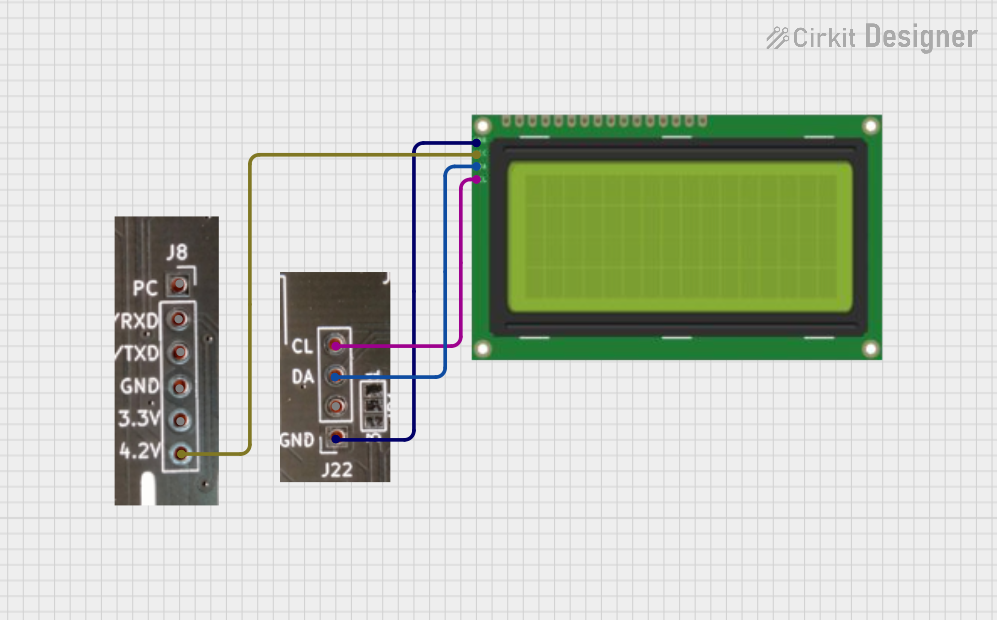
 Open Project in Cirkit Designer
Open Project in Cirkit Designer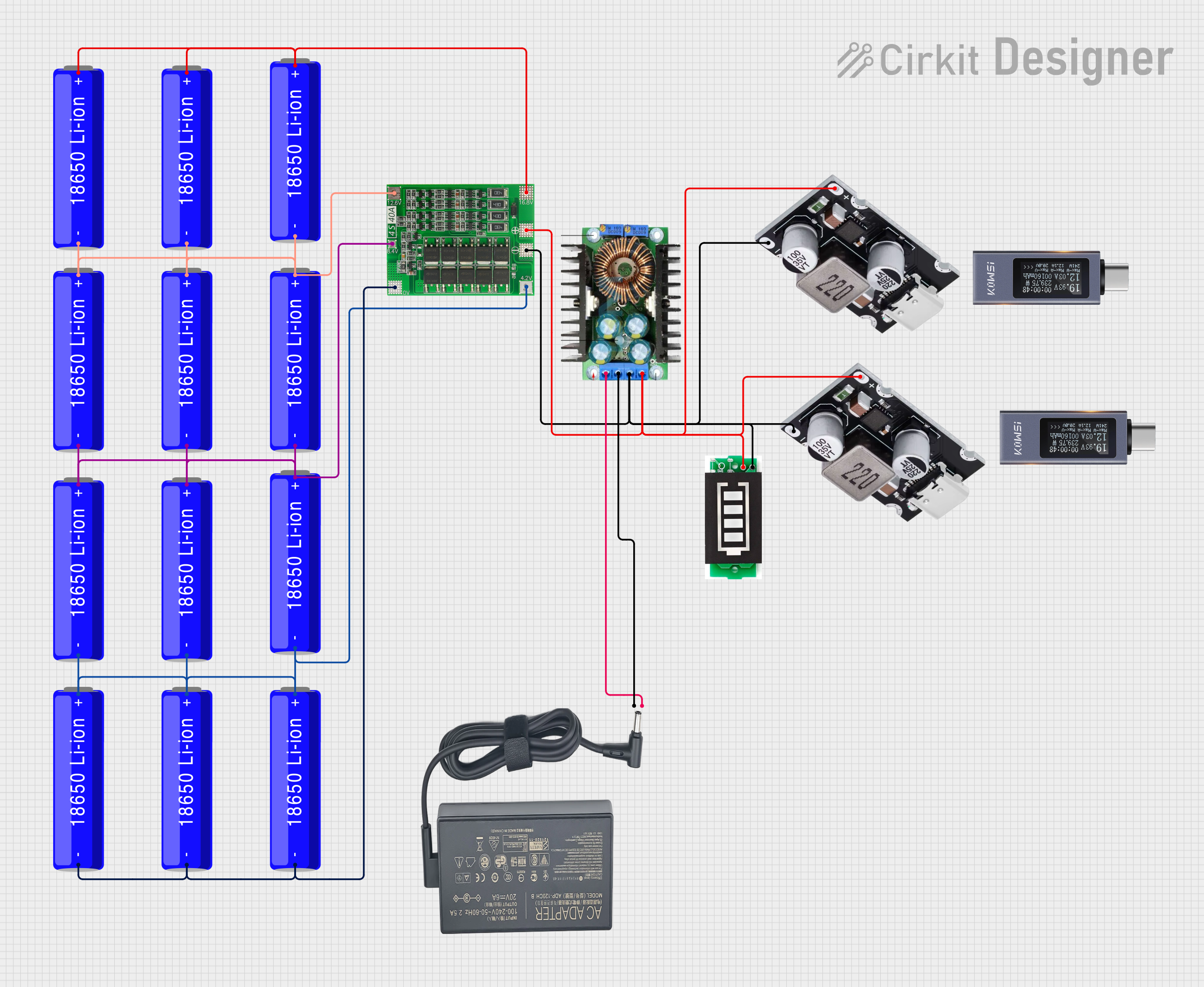
 Open Project in Cirkit Designer
Open Project in Cirkit DesignerExplore Projects Built with SCD-40

 Open Project in Cirkit Designer
Open Project in Cirkit Designer
 Open Project in Cirkit Designer
Open Project in Cirkit Designer
 Open Project in Cirkit Designer
Open Project in Cirkit Designer
 Open Project in Cirkit Designer
Open Project in Cirkit DesignerCommon Applications:
- Indoor air quality monitoring
- HVAC (Heating, Ventilation, and Air Conditioning) systems
- Greenhouse CO2 monitoring
- Smart home automation
- Industrial and environmental control systems
Technical Specifications
The SCD-40 sensor is equipped with advanced features and specifications to ensure high performance and accuracy. Below are the key technical details:
Key Specifications:
| Parameter | Value |
|---|---|
| CO2 Measurement Range | 400 ppm to 5000 ppm |
| Accuracy | ±(50 ppm + 5% of reading) |
| Operating Voltage | 3.3V to 5V |
| Current Consumption | 2 mA (typical) |
| Communication Interface | I2C and UART |
| Operating Temperature | -10°C to +60°C |
| Operating Humidity | 0% to 95% RH (non-condensing) |
| Dimensions | 10 mm x 10 mm x 7 mm |
Pin Configuration:
The SCD-40 sensor has a simple pinout for easy integration into your projects. Below is the pin configuration:
| Pin Name | Description |
|---|---|
| VIN | Power supply input (3.3V to 5V) |
| GND | Ground |
| SDA | I2C data line |
| SCL | I2C clock line |
| RX | UART receive line |
| TX | UART transmit line |
Usage Instructions
The SCD-40 sensor is straightforward to use in a circuit. It can be connected to a microcontroller, such as an Arduino UNO, via the I2C or UART interface. Below are the steps to use the sensor:
Connecting the SCD-40 to an Arduino UNO:
- Power the Sensor: Connect the VIN pin of the SCD-40 to the 5V pin on the Arduino UNO, and connect the GND pin to the Arduino's GND.
- I2C Communication: Connect the SDA pin of the SCD-40 to the Arduino's A4 pin (SDA) and the SCL pin to the Arduino's A5 pin (SCL).
- Install Required Libraries: Download and install the Adafruit SCD40 library from the Arduino Library Manager.
- Upload Example Code: Use the example code provided below to read CO2 concentration data.
Example Code:
#include <Wire.h>
#include "Adafruit_SCD40.h"
// Create an instance of the SCD40 sensor
Adafruit_SCD40 scd40;
void setup() {
Serial.begin(115200);
while (!Serial) delay(10); // Wait for Serial Monitor to open
Serial.println("Initializing SCD40 sensor...");
// Initialize the sensor
if (!scd40.begin()) {
Serial.println("Failed to find SCD40 sensor! Check wiring.");
while (1) delay(10);
}
Serial.println("SCD40 sensor initialized successfully.");
}
void loop() {
// Check if a new measurement is available
if (scd40.getDataReadyStatus()) {
float co2, temperature, humidity;
// Read CO2, temperature, and humidity data
if (scd40.readMeasurement(co2, temperature, humidity)) {
Serial.print("CO2: ");
Serial.print(co2);
Serial.print(" ppm, Temp: ");
Serial.print(temperature);
Serial.print(" °C, Humidity: ");
Serial.print(humidity);
Serial.println(" %");
} else {
Serial.println("Failed to read measurement. Please try again.");
}
}
delay(2000); // Wait 2 seconds before the next reading
}
Important Considerations:
- Ensure the sensor is not exposed to water or condensation, as it is designed for non-condensing environments.
- Allow the sensor to warm up for a few minutes after powering it on to ensure accurate readings.
- Avoid placing the sensor in direct sunlight or near heat sources, as this may affect its accuracy.
Troubleshooting and FAQs
Common Issues and Solutions:
Sensor Not Detected:
- Cause: Incorrect wiring or I2C address mismatch.
- Solution: Double-check the wiring and ensure the SDA and SCL pins are connected correctly. Verify the I2C address in the code matches the sensor's default address (0x62).
Inaccurate Readings:
- Cause: Insufficient warm-up time or environmental interference.
- Solution: Allow the sensor to warm up for at least 5 minutes. Ensure the sensor is placed in a stable environment away from direct sunlight or strong air currents.
No Data Output:
- Cause: Faulty connections or incorrect library installation.
- Solution: Check all connections and ensure the Adafruit SCD40 library is installed correctly in the Arduino IDE.
FAQs:
Q: Can the SCD-40 measure other gases besides CO2?
A: No, the SCD-40 is specifically designed to measure CO2 concentration using NDIR technology.Q: What is the typical lifespan of the SCD-40 sensor?
A: The sensor has a typical lifespan of over 15 years under normal operating conditions.Q: Can I use the SCD-40 with a 3.3V microcontroller?
A: Yes, the SCD-40 supports both 3.3V and 5V logic levels, making it compatible with a wide range of microcontrollers.Q: How often should I calibrate the sensor?
A: The SCD-40 features automatic self-calibration. However, for optimal accuracy, it is recommended to expose the sensor to fresh air periodically.
By following this documentation, you can effectively integrate and use the SCD-40 sensor in your projects for accurate CO2 monitoring.